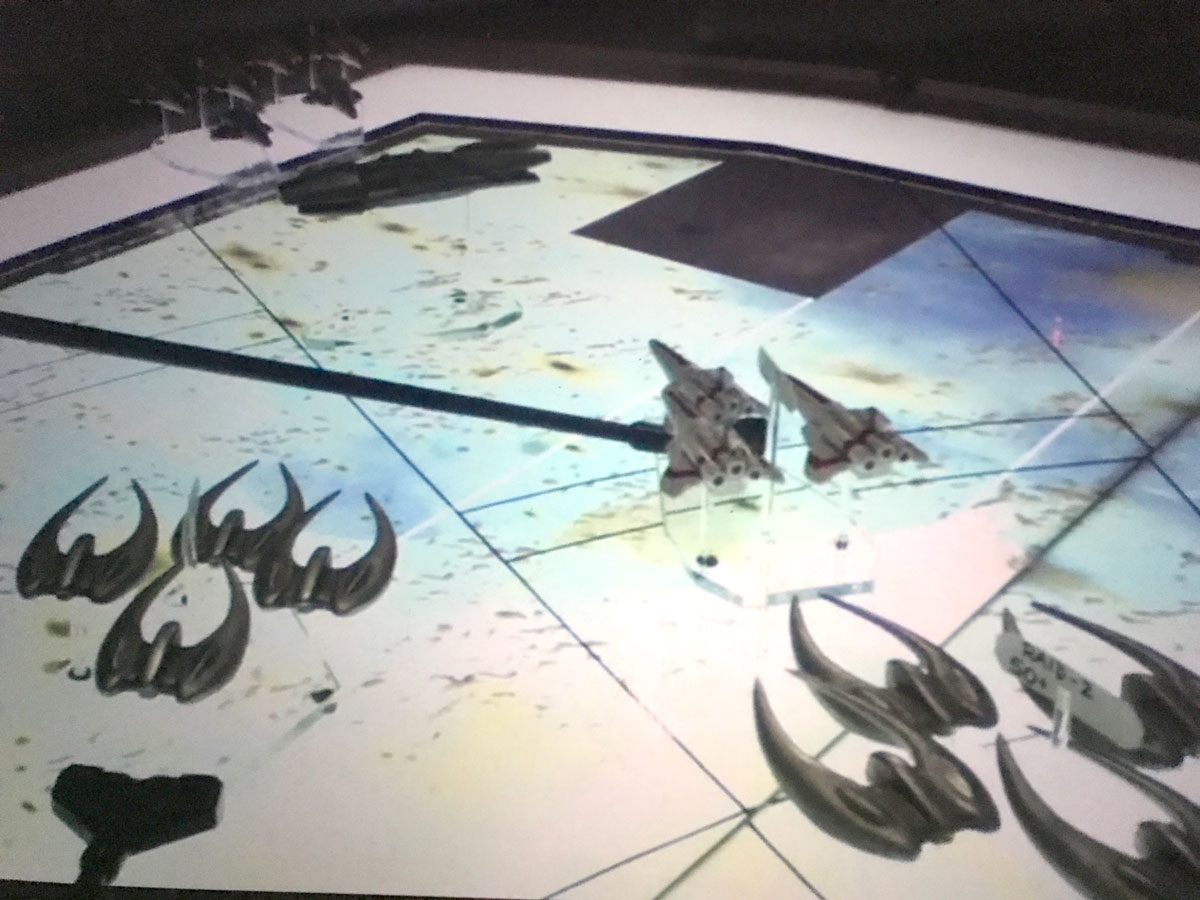Models and holograms
Sometimes you need to break with continuity
Admiral Hologram appears on the bridge.
I’ve been enjoying the new Star Trek Discovery, and yes, I subscribed to CBS’s streaming service so I can watch it. It seems to be getting mixed reviews from fans who feel it strays a little too far from the Star Trek mold. It is different, but I guess I don’t see that as a bad thing. Personally, I think it’s an engaging show and I look forward to watching it each week.
Star Trek Discovery is a prequel, set after Enterprise, but 10 years before the original Star Trek. I am fascinated by the creative decisions the art directors have made to try to help the show visually fit with the other series. The challenge is to make the show look futuristic to a modern audience, while using enough of the earlier material — which occurs later in the timeline — to connect the show for the true fans.*
For Star Trek, this is especially challenging because the original series was filmed in the 1960s and include lots of buttons and switches. In today’s world, buttons and switches are anything but futuristic.
Among fans, one of the most controversial elements** of the new show is holographic communications. In the premiere, several conversations occur with holograms on the bridge. In another episode, a main character looks at herself in a holographic “mirror” program.
“In today’s world, buttons and switches are anything but futuristic.”
This “controversy” reminded me of an episode of Ronald D. Moore’s Battlestar Galactica podcast.*** He did an episode commentary for every single show of the rebooted Battlestar while drinking scotch. I used to listen to them religiously.
To visualize space battles, Battlestar Galactica used seeming archaic models on a table to show what was happening. It seemed odd, considering that we were flying though space, and looked like something out of the German high command in the movie Patton. Moore explained that it was the best way to show the viewer how the battle was unfolding. And he was right, the models on the table were much easier to understand than blips on a screen.
The Cylons are closing in.
It’s true that these holograms aren’t used in any other Star Trek****, but I like the addition. Being able to have your cast interact with a hologram is much more dynamic visually than having them talk to a view screen. And just like Ron Moore’s decision to use models on a table to show a space battle, the use of the holograms is simply the best way to engage today’s viewer.
Sometimes, the best creative choice is to break with tradition.
* This is a problem with all sci-fi prequels. Take a look at how the Star Wars prequels handled technology and art direction and compare that to a more faithfully-aligned Rogue One.
** And also, small caps subtitles.
*** Sadly, they are not available online anymore. They were a fabulous companion for watching the show.
**** I’m probably wrong, but the entirely of the series is too vast for me to find a specific reference.
Bob Wertz writes about design, technology and pop culture at Sketchbook B. Bob is a Columbia, South Carolina-based designer, creative director, college instructor, husband and dad. He’s particularly obsessed with typography, the creative process and the tools we use to create. He's currently in the middle of a project to design a new shirt a week for an entire year. Follow Bob on Twitter, Instagram and Micro.Blog.


